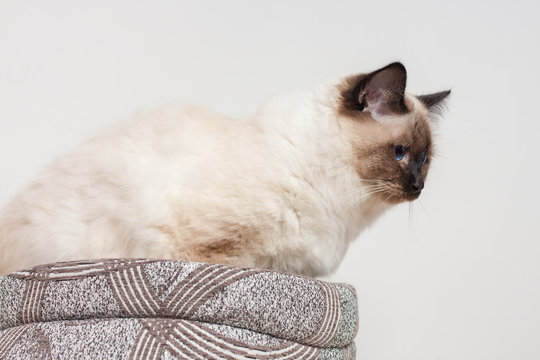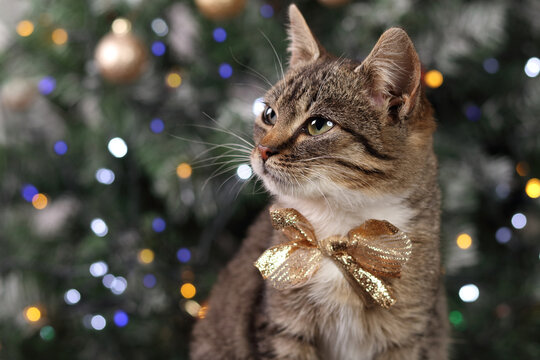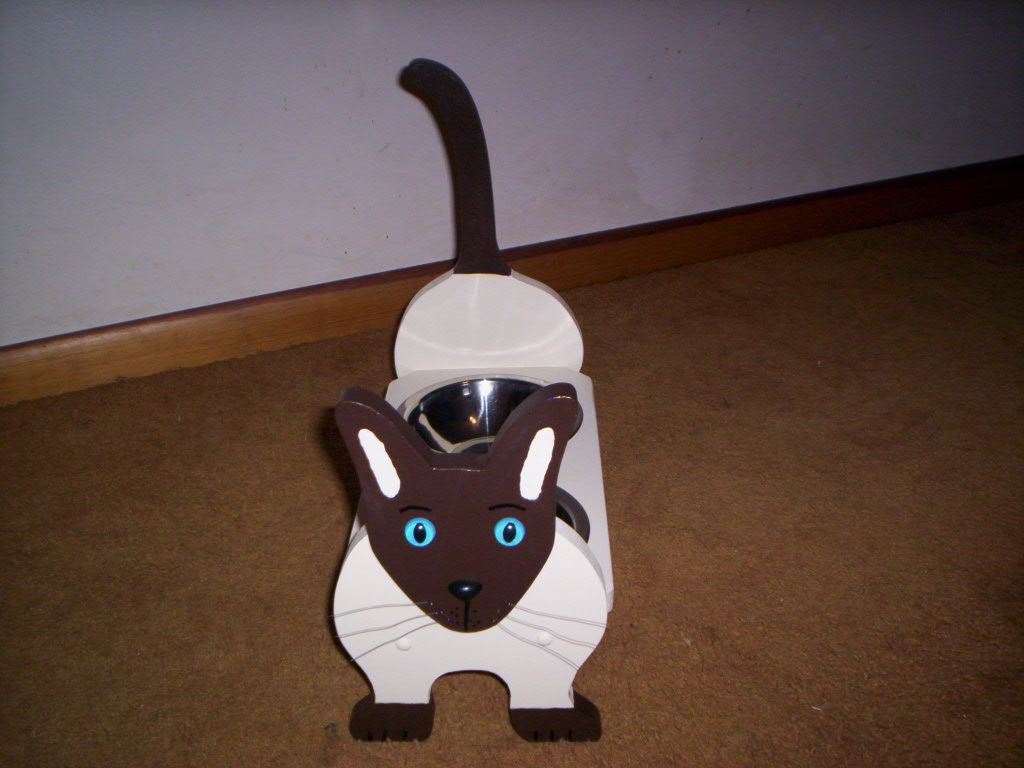Home pets are an important part of many households, providing companionship, comfort, and joy to their owners. When it comes to owning a pet, indoor cats are a popular choice for many people. In this ultimate guide to home pet care for indoor cats, we will provide you with all the information you need to ensure your furry friend is healthy, happy, and well-cared for. From creating a safe and comfortable indoor environment to grooming and health tips, we will cover everything you need to know to be a responsible and loving home pet owner.
Understanding Your Cat’s Behavior
Cats are known for their unique and sometimes mysterious behaviors, but understanding their behavior is key to providing proper care and attention to your indoor cat. In this section, we will discuss some common cat behaviors and provide tips on how to manage and prevent unwanted behaviors.
Scratching
Scratching is a natural behavior for cats, as it helps them stretch, mark their territory, and keep their claws in good condition. However, it can also be destructive to furniture and other household items. To manage scratching behavior, provide your cat with appropriate scratching surfaces such as scratching posts or pads. Encourage your cat to use these surfaces by placing them in areas where your cat likes to scratch. You can also use deterrents such as double-sided tape or citrus sprays to discourage your cat from scratching unwanted items.
Meowing
Cats meow for various reasons, such as to communicate with their owners, express hunger or discomfort, or seek attention. However, excessive meowing can be a sign of an underlying issue such as stress or illness. To manage excessive meowing, try to identify the cause and address it accordingly. For example, if your cat is meowing for attention, try spending more quality time with them or providing interactive toys to keep them mentally stimulated.
Sleeping Habits
Cats are known for their love of sleep, and can sleep up to 16 hours a day. However, their sleeping habits can be influenced by factors such as age, health, and environment. To ensure your cat gets enough rest, provide them with a comfortable and quiet sleeping area away from high-traffic areas. You can also provide your cat with cozy bedding and toys to help them feel safe and relaxed.
Aggression
Aggression in cats can be caused by various factors such as fear, stress, or territorial issues. To manage aggressive behavior, try to identify the cause and address it accordingly. For example, if your cat is afraid of other pets in the household, provide separate feeding areas and litter boxes to reduce stress. You can also consult with your veterinarian or a professional animal behaviorist for additional guidance.
By understanding your cat’s behavior and providing appropriate care and attention, you can ensure that your indoor cat is happy and healthy.
Building a Strong Bond with Your Indoor Cat
It is essential to build a strong bond with your indoor cat to ensure their emotional wellbeing and create a happy and healthy relationship between you and your pet. Here are some ways to build a strong bond with your indoor cat:
Spend Quality Time Together
Spending quality time with your indoor cat is one of the most effective ways to build a strong bond with them. Here are some ways to achieve this:
- Set aside time each day to play with your cat. This will not only strengthen your bond but also provide your cat with the necessary mental and physical stimulation.
- Create a calm and relaxed environment for your cat to feel comfortable in your presence. This can be achieved by providing a comfortable spot for them to rest and relax.
Play Games with Your Cat
Playing games with your indoor cat not only provides entertainment but also helps build a stronger bond between you and your pet. Here are some games to play with your cat:
- Use interactive toys such as a laser pointer, feather wand, or squeaky mouse. These toys are not only great for physical exercise but also stimulate your cat’s natural hunting instincts.
- Play hide and seek with your cat by hiding treats or toys around the house for them to find. This game provides mental stimulation for your cat and strengthens your bond.
Provide Affection and Praise
Providing affection and praise to your indoor cat is crucial for building a strong bond and showing them that they are loved. Here are some ways to achieve this:
- Pet your cat frequently and show them physical affection such as cuddling and stroking.
- Use positive reinforcement techniques such as treats and praise to reward good behavior.
- Talk to your cat in a soothing voice to establish a connection and show them that you care.
By implementing these strategies, you can build a strong bond with your indoor cat, leading to a happy and healthy relationship between you and your pet.
Caring for Your Indoor Cat
Benefits of Keeping Your Cat Indoors
Indoor cats are safer than outdoor cats. They are protected from hazards such as cars, predators, and infections. Indoor cats are also less likely to get lost or stolen. Another benefit of keeping cats indoors is that they are not at risk of harming local wildlife. Cats are natural hunters, and outdoor cats can cause damage to local ecosystems. By keeping your cat indoors, you are providing them with a safe and healthy environment.
Creating a Safe and Comfortable Indoor Environment for Your Cat
Creating a comfortable environment for your indoor cat is essential to their wellbeing. You can start by providing them with a cozy bed in a quiet area of your house. Make sure that your cat has access to fresh water and food at all times, and that their water bowl is separate from their food bowl. Additionally, you should ensure that your home is free of any harmful items such as toxic plants, sharp objects, or small objects that your cat could swallow. You can also provide your cat with vertical spaces to climb, such as cat trees and shelves, to encourage exercise and mental stimulation.
Feeding and Nutrition Tips for Your Indoor Cat
Feeding your indoor cat a balanced and nutritious diet is essential to their overall health. Indoor cats have lower energy requirements than outdoor cats and need fewer calories to maintain their weight. You can consult your vet for advice on the best diet for your cat, but generally, you should choose a high-quality food that is appropriate for your cat’s age, weight, and activity level. Avoid giving your cat table scraps or foods that are toxic to cats, such as chocolate and onions. Feed your cat small, frequent meals throughout the day to promote healthy digestion, and provide your cat with fresh water at all times.
Litter Box Training and Maintenance for Your Indoor Cat
Litter box training is crucial for indoor cats. You should choose a litter box that is easy for your cat to access and clean, and place it in a quiet and private area of your house. Scoop the litter box daily and completely change the litter once or twice a week. It is important to maintain a clean litter box to avoid any health issues for your cat. You should also provide one litter box per cat plus one extra, and choose a high-quality, unscented litter that your cat likes.
By following these tips, you can ensure that your indoor cat is happy, healthy, and well-cared for.
Pet-Friendly Home Design
When designing a home for your indoor cat, there are a few things to consider to ensure that your furry friend is happy and safe.
Flooring and Furniture Considerations for Pet Owners
Cats can cause damage to your flooring and furniture with their scratching and playful behavior. To minimize any damage, you should choose flooring and furniture that is durable and resistant to scratches. Hardwood or tile flooring is easy to clean and maintain, while furniture made of materials such as leather or microfiber is more durable.
Plants that are Safe (and Unsafe) for Cats
Cats are curious animals and can be attracted to plants, but some plants can be toxic to cats. It’s important to avoid having any toxic plants in your home, such as lilies, azaleas, and daffodils. Instead, you can choose safe plants such as catnip, spider plants, and bamboo plants that are not toxic to cats.
Tips for Creating a Cat-Friendly Home
Creating a cat-friendly home involves providing your cat with a stimulating and safe environment. Here are some tips to help you create a cat-friendly home:
- Provide your cat with toys and scratching posts to keep them mentally stimulated and physically active.
- Create a cozy space for your cat by providing a cat tree or a window perch where they can rest and observe their surroundings.
- Ensure that your home is free of any hazards such as electrical cords, small objects, or sharp edges.
- Consider installing shelving or walkways to allow your cat to explore and climb.
Introduction to Cat Furniture and Accessories
Cat furniture and accessories can provide your cat with a comfortable and safe space to play and rest. You can choose from a variety of cat beds, cat trees, scratching posts, and toys that are suitable for your cat’s age and size. Additionally, accessories such as cat bowls, litter boxes, and collars should be safe and comfortable for your cat. When selecting cat furniture and accessories, consider the size of your home and the amount of space you have available.
Cat Grooming and Health
Cats are independent and self-grooming animals, but regular grooming is still essential for their health and wellbeing. Here are some tips to help you properly groom your cat:
Importance of Regular Grooming for Cats
Regular grooming can help prevent hairballs, reduce shedding, and keep your cat’s coat healthy and shiny. You should groom your cat at least once a week, including brushing their coat, trimming their nails, and cleaning their ears and teeth.
Brushing and Bathing Techniques for Cats
Cats are self-cleaning animals and do not require frequent bathing. However, you can bathe your cat if they get dirty or have a skin condition. You should use a cat-specific shampoo and avoid getting water in their ears or eyes. In addition to this, brushing your cat’s coat regularly can help remove any loose fur and prevent hairballs.
Nail Trimming and Ear Cleaning Tips
Nail trimming is important for your cat’s health and safety. You should trim your cat’s nails once a month to prevent them from getting too long. If your cat has dark nails, use a flashlight to help you see the quick inside the nail to avoid cutting it. In addition to this, you should clean your cat’s ears regularly to prevent any infections or buildup of wax. Use a cotton ball or a soft cloth to gently clean the visible part of the ear, and avoid going too deep into the ear canal.
Common Cat Health Issues and How to Prevent Them
Indoor cats are less likely to get sick compared to outdoor cats. However, they can still develop health issues such as obesity, dental problems, and urinary tract infections. You can prevent these issues by providing your cat with a balanced diet, regular exercise, and annual checkups with your vet. Additionally, make sure to keep your cat’s litter box clean and provide fresh water at all times.
When to Seek Veterinary Care for Your Cat
It is important to seek veterinary care for your cat if they show any signs of illness or injury. Some common signs include vomiting, diarrhea, lethargy, loss of appetite, or difficulty breathing. Additionally, you should take your cat for regular checkups with your vet to ensure their health and wellbeing. Your vet can also provide you with advice on any specific health concerns you have for your cat.
Fun Activities and Games for Cats
Cats are curious creatures that love to play and explore their environment. Playtime is an essential part of their physical and mental wellbeing, providing them with exercise, mental stimulation, and stress relief. Here are some fun activities and games that you can try with your furry friend:
Provide Your Cat with Toys
Provide your cat with a variety of toys to keep them entertained. Some popular options include:
- Balls and toy mice for batting and chasing
- Interactive toys that dispense treats or make noise
- Catnip toys for added excitement
- Puzzle feeders that require your cat to work for their food
DIY Cat Toys and Games
You don’t need to spend a lot of money on cat toys. You can create DIY toys and games using simple household items like cardboard boxes, paper bags, or string. Here are some ideas:
- Cut holes in a cardboard box and let your cat explore and play inside
- Make a wand toy by attaching a string or ribbon to a stick and dangling it in front of your cat
- Fill a paper bag with crumpled paper or treats and let your cat have fun batting it around
Indoor Exercise Ideas for Cats
Indoor cats can get bored easily, which can lead to weight gain and other health issues. Here are some ideas to help your cat get the exercise they need:
- Provide your cat with a cat wheel so they can run and play
- Use a laser pointer to encourage your cat to chase and pounce
- Set up a cat tunnel for your cat to explore and hide in
- Provide your cat with a climbing structure such as a cat tree or shelves
Training Tips and Tricks for Cats
Training your cat can be a fun and rewarding experience for both you and your furry friend. Here are some tips to get started:
- Use positive reinforcement techniques such as treats or praise to reward good behavior
- Teach your cat basic commands such as sit, come, or high five
- Train your cat to use a scratching post instead of furniture
- Encourage your cat to walk on a leash so they can enjoy the outdoors safely
Remember, every cat is unique and may have different preferences when it comes to playtime and exercise. It’s important to find what works best for your cat and make playtime a regular part of their routine.
Conclusion
In conclusion, indoor cats are wonderful home pets that require proper care and attention. By following the tips and techniques discussed in this guide, you can provide your indoor cat with a safe and comfortable home environment, a balanced diet, regular grooming and health care, and plenty of fun activities and games to keep them entertained. Remember, responsible home pet ownership is the key to a happy and healthy indoor cat.
At our shop, we offer a wide range of cat furniture and accessories to help you create the perfect indoor environment for your furry friend. From cat trees and scratching posts to cozy beds and toys, we have everything you need to keep your cat happy and healthy. Visit our shop today and see how we can help you provide the best possible care for your indoor cat.
As a lifelong cat lover and owner of multiple indoor cats, I have gained valuable experience in the proper care and well-being of these beloved pets. I have also conducted extensive research on the topic, citing studies and sources such as the American Veterinary Medical Association and the American Society for the Prevention of Cruelty to Animals. I am dedicated to providing accurate and trustworthy information to fellow cat owners, ensuring that every indoor cat receives the best possible care and attention.





